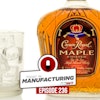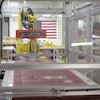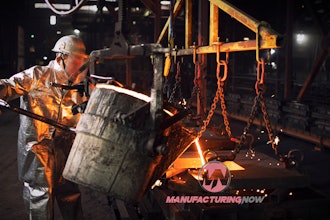It’s essential to understand material compatibility issues — and your options — when selecting pressure and flow control devices for calibration and sampling of reactive gases in the chemical process and quality control laboratory
By Larry Gallagher
Process and analytical instrumentation used in today’s chemical processing units and quality control laboratories requires a continuous supply of high-purity carrier, support, process, or calibration gases. Supplying gases safely and cost-efficiently without compromising purity and sample integrity can be accomplished with a gas sampling and control system with components that are compatible with the sample and conditions required for the specific application. This article will focus on a key consideration in specifying such systems — materials of construction and pressure control options for reactive or condensable samples.
When considering materials compatibility for calibration or process gas applications, it is necessary to look at the metal components, surface plating or treatment, and polymer or elastomer components. The results of selecting the appropriate materials are increased accuracy in calibration, increased service life of components, and increased safety. Selecting the wrong components can result in invalid results, increased costs, and unsafe operating conditions.
Reviewing general compatibility principles should serve as a guide in selecting appropriate pressure or flow control systems. For specific gases or conditions, however, you should always consult with manufacturers and review their various tables of materials compatibility.
Metal Components
Rule 1: All metals are not created equal.This rule applies when considering the difference between forged metal parts or machined barstock components. For high-purity and high-integrity systems, metal components that contact the gas stream should be made from machined barstock, not forgings. This is because of the increased porosity that occurs during the actual forging process in the metal itself and the resulting surface that will trap and release impurities, creating possible particulate generation. Barstock material ensures smoother surface finishes and elimination of contaminants.
Rule 2: Stainless is usually the best.

Figure 1: The 455 Series regulator features internal Hastelloy components and Monel gauges for improved corrosion resistance over 316L stainless steel
Rule 3: Brass is suitable for most inert applications.
This is true, but the material should be barstock and a low copper alloy. It is worth noting that acetylene forms reactive byproducts if exposed to copper. When piping acetylene, stainless steel or carbon steel should be used.
Rule 4: Aluminum is suitable for certain mildly corrosive applications.
It’s suitable specifically for anhydrous ammonia, but it must be anodized. Its low cost and ease of machining make it an attractive material. However, it is not a replacement for 316L stainless.
Surface Plating or Treatments
Rule 5: Chrome-plating is purely cosmetic.Chrome-plating brass or other materials does not give it corrosion resistance; it only makes the exterior finish look good and prevent the brass from turning green.
Rule 6: Nickel plating provides good corrosion resistance for acid gas applications.
Electro-less nickel-plated brass is preferred when handling highly corrosive acid gases.
Rule 7: Always passivate fluorine systems.
Fluorine systems need to be passivated prior to use. This process is the controlled exposure of the wetted surface to low levels of fluorine, which creates an impervious metal fluoride layer. This procedure should only be done by the manufacturer. Untreated surfaces will ignite when exposed to fluorine.
Rule 8: Glass coating or surface inerting ensures the integrity of low level reactive mixtures.

Figure 2: The blue-to-rainbow finish on this 316L regulator body is the result of a chemically deposited silicone glass layer
Polymer or Elastomer
Rule 9: Elastomers are bad.Butyl rubber, neoprene, and Buna-n are examples of elastomers that are often used in industrial regulators or pressure control devices that must not be used in high-purity or reactive gas systems. They are prone to off-gassing impurities, and they also diffuse moisture and air into the gas stream.
Rule 10: Fluoropolymers are generally suitable for high-purity systems.
The seat material in high-purity systems should be PTFE (Teflon), PCTFE (KelF), Kelrez, or similar inert polymers. These are resistant to nearly all reactive gases and provide an inert seal. Though they are suitable for internal components, caution should be used when considering them for tubing or high-pressure pigtail applications. In both cases, they may diffuse materials across these barriers.
Rule 11: Consider the operating temperature of the system.

Figure 3: This vaporizing 452 Series regulator operates at temperatures as high as 380°F (193°C) safely because of its Arlon (PEEK) seat material
Rule 12: Consider the operating pressure of the system.
Besides making sure the manufacturer certifies that the system or component is suitable for the operating pressure, examine the seat material to ensure that either PCTFE or PEEK is used for higher inlet pressures — 4,500 psig and above.
Larry Gallagher is the specialty gas products manager for Concoa, Virginia Beach, VA, manufacturers of gas pressure and flow control equipment for industrial, medical, and specialty gas applications as well as distribution systems for laser materials processing. More information is available by calling 800-225-0473 or visiting www.concoa.com.


















